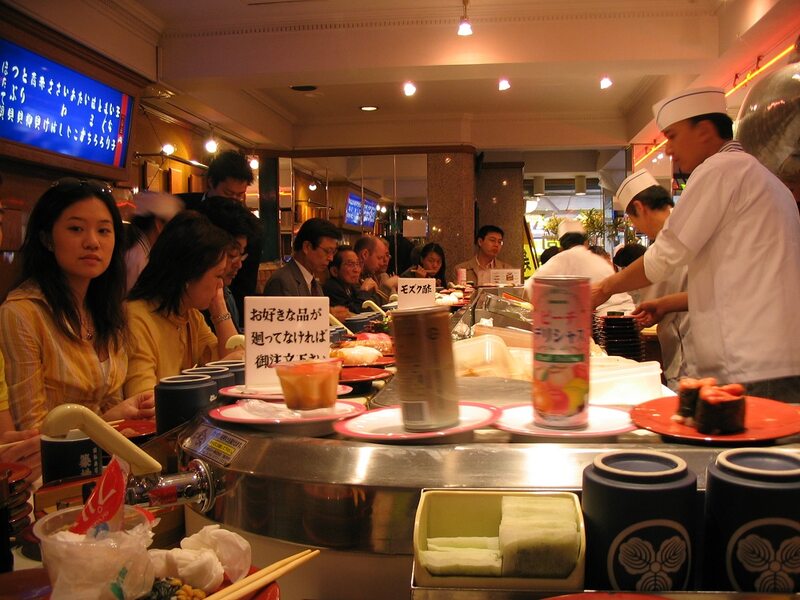Having sushi in Japan is a joyful but costly habit, especially when you are going for high-end choices. Yet, certain times of the day allow one to enjoy sushi at a much lower price without sacrificing quality. This guide will assist you in understanding when it's most economical to eat sushi while still relishing its deliciousness.
Early Morning Sushi - Freshness and Savings
Sushi, in Japan when it's early morning you can get sushi at a cheaper cost. Numerous sushi restaurants and kaizen (or conveyor belt) sushi chains reduce prices for their breakfast menus or early lunch specials. The reason is, that these places must sell the fresh stock they have from last night and bring in customers who come early. If you come early, it is good for two things: you begin your day with sushi it's less expensive and the morning time makes eating quieter compared to later in the day.
- Fresh Ingredients: Sushi prepared early is often made with the freshest seafood available, ensuring high quality.
- Less Crowded: Early morning dining offers a quieter, more relaxed atmosphere compared to peak hours.
Lunch vs. Dinner - Significant Price Differences

Choosing a lunch course instead of dinner is one of the most obvious methods for saving on sushi in Japan. In high-end sushi restaurants like Sushi Ginza Onodera, you can enjoy significant discounts by dining during the hours designated for lunch. An example would be that the omakase (chef's choice) course at Sushi Ginza Onodera costs 27,500 yen (around $174) during dinner. However, it is priced only at 16,500 yen (about $105) if taken as part of a meal offered during lunchtime. This change of eating hours may let you keep close to $70, giving you the chance for a top-quality Edomae sushi experience that costs much less than what it does during the evening time. In the same way, at other luxury places such as one-star Udatsu Sushi, there is quite an obvious price variation shown by savings ranging from around $100 between midday and evening meals.
- Lunchtime Savings: Opting for lunch can reduce your total bill significantly, making premium sushi more accessible.
- Experience Variations: Lunch menus might differ in terms of course composition and dining ambiance compared to dinner.
Mid-Range Omakase Courses - Affordable Lunch Options
For those who desire a less costly omakase experience but do not wish to pay the premium price, mid-range sushi restaurants can be considered. At Sushi Azabu in the Azabudai Hills complex, you can find an "omakase light" lunch course for 4,800 yen (approximately $30) as opposed to their dinner course costing 9,800 yen (around $62). This considerable savings of over $30 makes it more appealing for budget-wise tourists to have a meal at lunchtime and savor good sushi.
- Cost-Effective Quality: Mid-range restaurants provide a high-quality sushi experience at a more affordable rate.
- Balanced Experience: Enjoy a good balance between cost and quality without compromising too much on the sushi experience.
Sushi Go-Rounds - Best Times for Lower Prices
Kaitenzushi, also known as sushi-go-rounds, is a favorite and economical option for those who enjoy sushi. These conveyor belt-style restaurants provide sushi at affordable prices all day long; you can have a dish of two pieces for as little as 110 yen (roughly $0.69). If you want to save more money and not wait too long, it's better to go eat in kaitenzushi places during less busy times like early afternoon or late evening. Coming at the start time or in the mid-afternoon could assist in avoiding busy periods, leading to faster service and a more enjoyable dining experience. During high times like lunch and dinner rush, you may need to wait longer to be served, and finding a seat could be difficult.
- Variety and Freshness: Sushi varieties might be more diverse and fresher during non-peak hours.
- Service Quality: Expect more attentive service when visiting during less busy times.
Supermarket Sushi - Timing and Quality Considerations
Sushi from supermarkets and department stores in Japan is sometimes a cheaper option than eating outside. The quality of supermarket sushi might differ, with certain supermarkets such as Maruetsu having more fresh and attractive choices compared to other places. For the best offers, buy sushi early in the morning for its freshness (Supermarkets and Department Stores). But, if you like lower-priced choices, supermarkets often reduce the prices of unsold sushi just before they close. This might be a good moment to get some cheap sushi especially if freshness is not your main concern.
- Turnover and Quality: High turnover in supermarkets often indicates fresher sushi.
- Discount Timing: Markdowns on sushi often occur before store closing, providing cost-effective options.
Late-Night Sushi - Last-Minute Deals

In the nighttime, especially from 8 PM onwards, certain sushi restaurants could provide price reductions for selling off remaining inventory. It might be a beneficial period to obtain lower rates, particularly if you are interested in attempting various sushi types. Yet, it is crucial to understand that not all places give discounts at this time and availability may differ. If you choose to have sushi late at night, there may be less variety available. Confirm that the restaurant maintains good standards even during these hours.
- Limited Stock: The availability of certain sushi items may be limited as restaurants try to clear out the remaining inventory.
- Quality Check: Ensure that the quality of the sushi remains high despite the lower prices and reduced selection.
Seasonal and Special Occasions - Promotional Pricing
Apart from particular times of the day, sushi prices can be affected by seasonal happenings and special events. Some restaurants may have promotional rates or unique offers at specific periods, like New Year's or cherry blossom season. It is good to investigate if there are any promotions or price reductions that match your coming visit. Even if these offers are not always connected to particular times, they can greatly influence how much you pay for your sushi experience in total.
- Special Promotions: Look out for limited-time offers and special sushi sets related to seasonal events or holidays.
- Holiday Variations: Prices and promotions may vary widely depending on the time of year and special events, so plan accordingly.
Conclusion
Knowing the right times of day for eating sushi in Japan can assist you in relishing top-grade sushi without going over your budget. Be it having a lavish lunch at an upscale eatery, picking a mid-level omakase course, or relishing reasonable sushi from kaitenzushi or supermarket, timing is key to deciding how much money will be spent. If you plan when to go out for sushi carefully, this way ensures that your experience of eating these delicacies is enjoyable and fits well within the limits set by your wallet.







